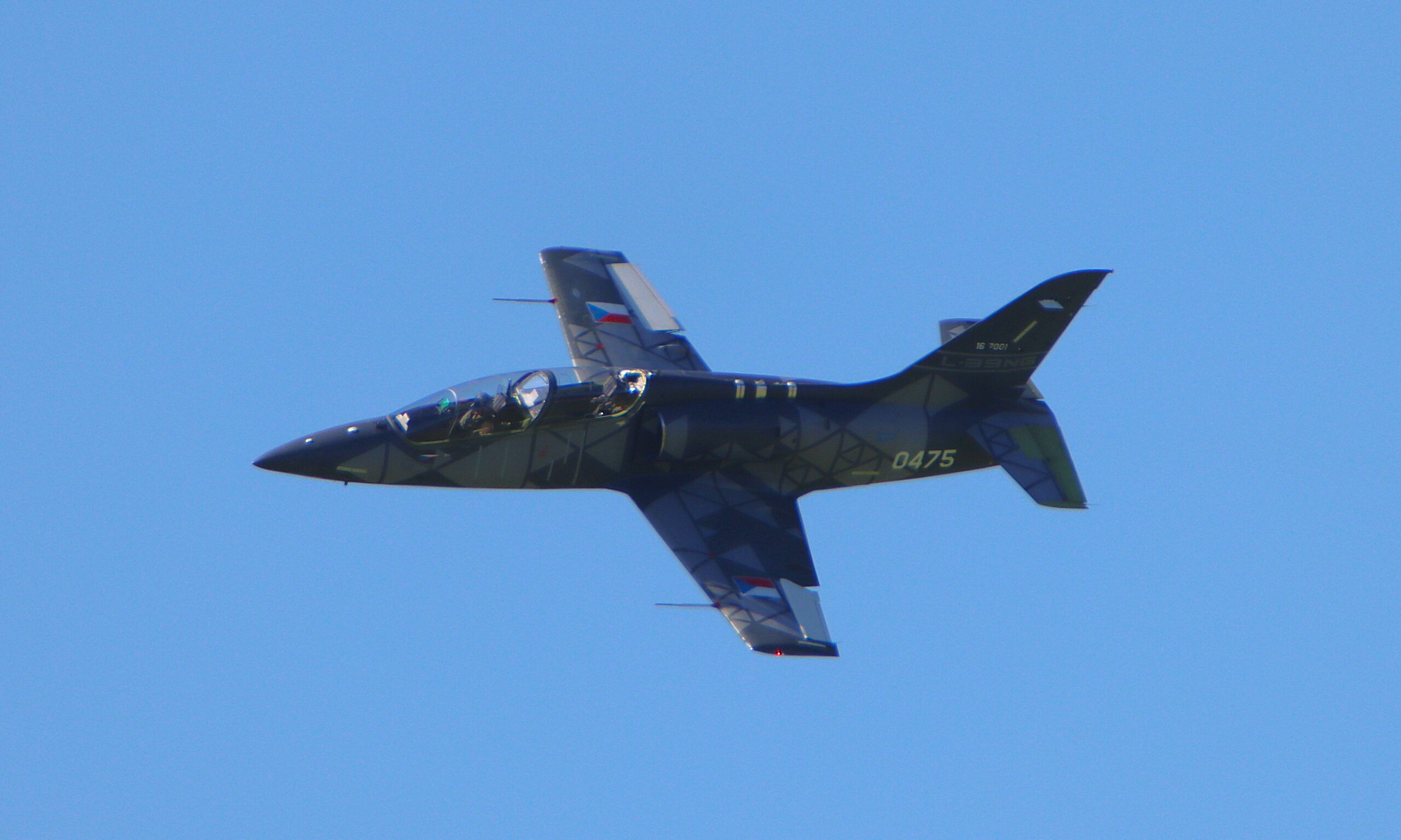Ostrawa 2025-09-27
Aero L-39 NG Skyfox.
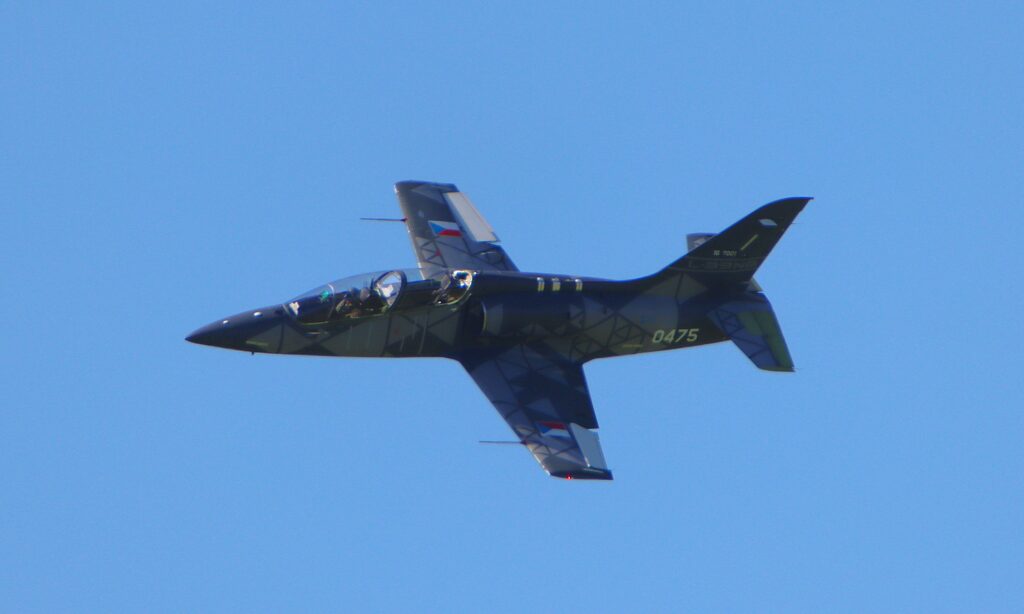
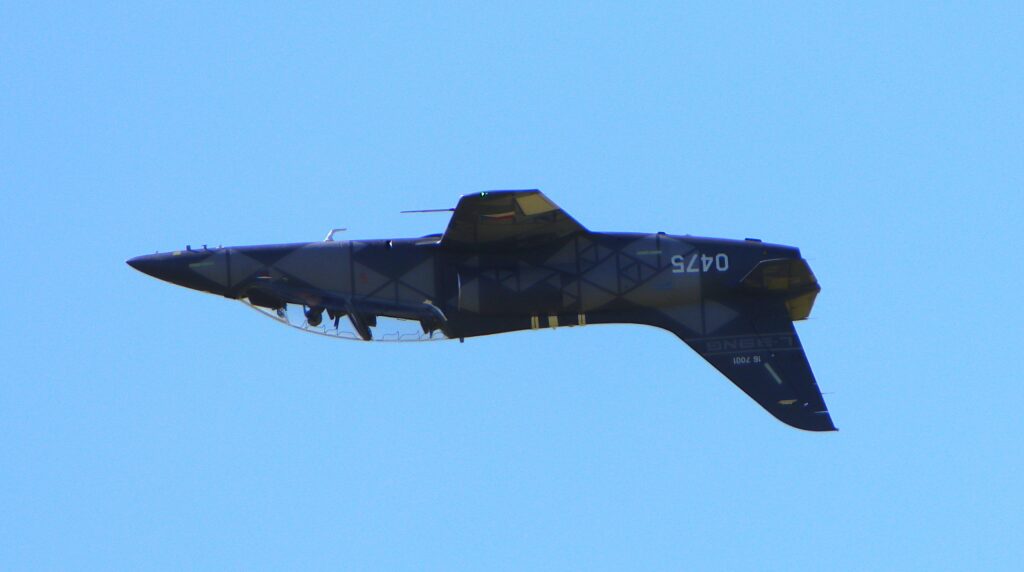
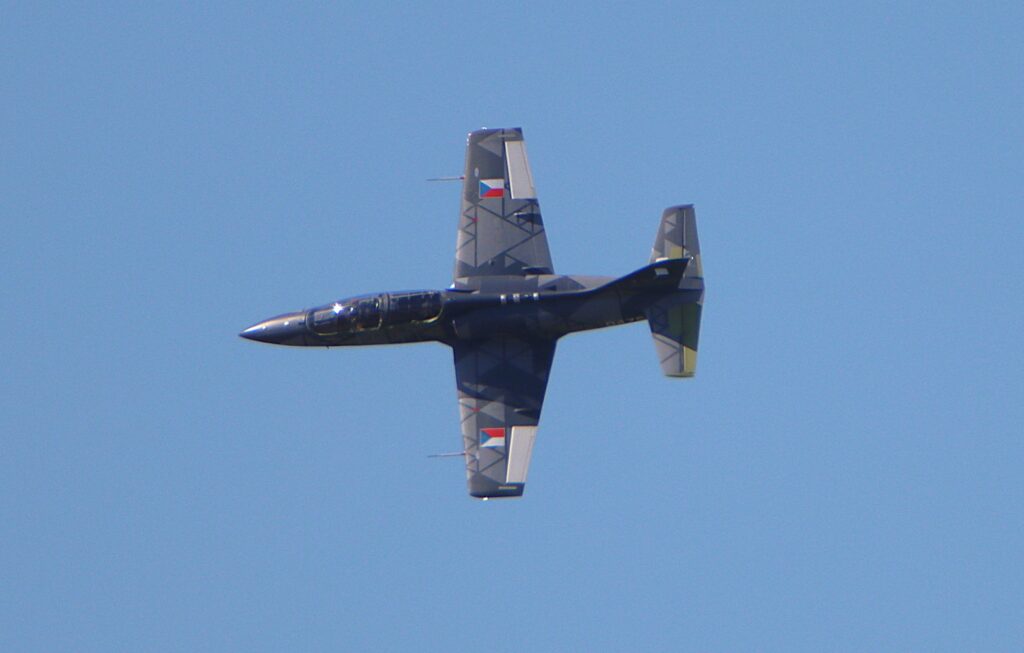
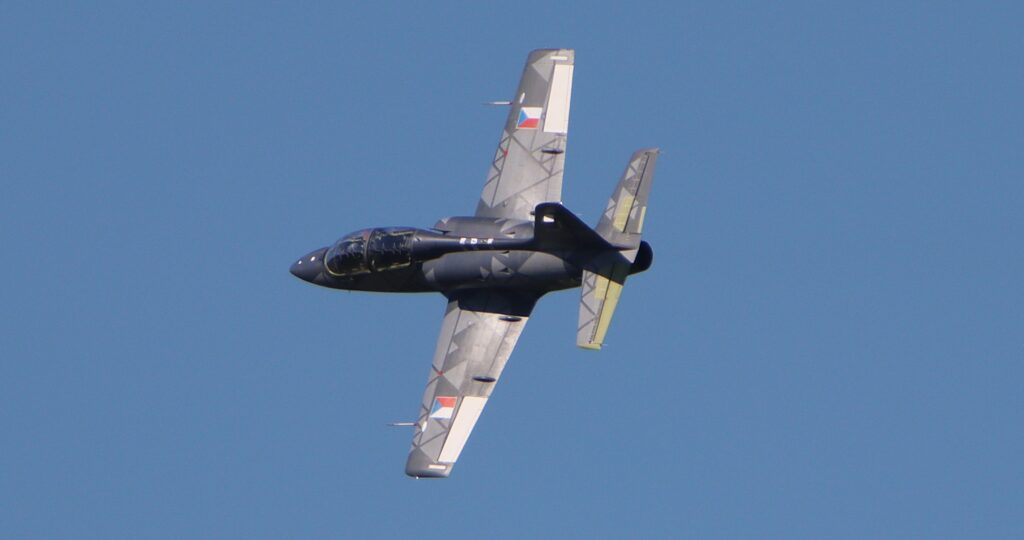
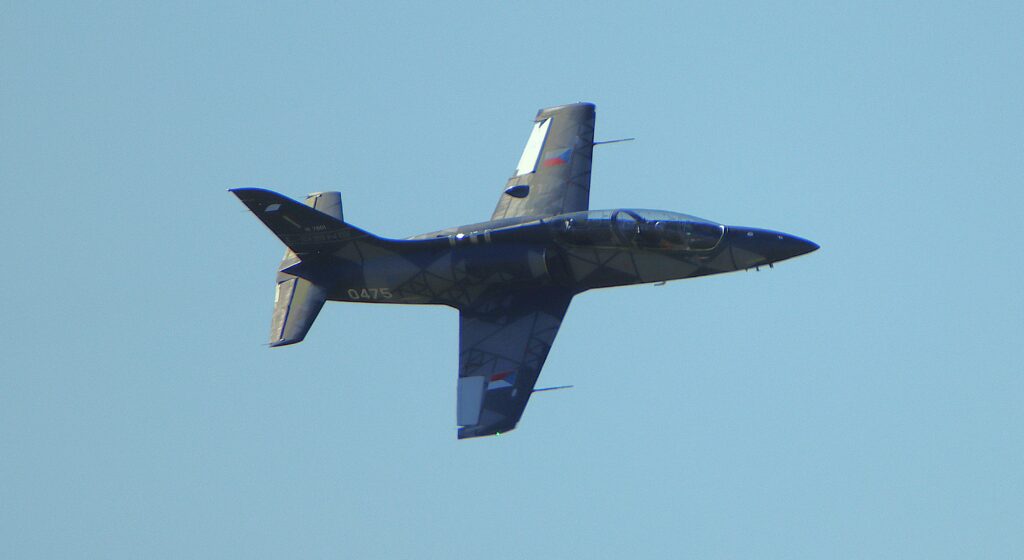
The Aero L-39 Albatros aircraft was built at Aero Vodochody, when Czechoslovakia still existed. Its first flight was on November 4, 1968. Serial production of the aircraft lasted from 1971 to 1999. The first serial aircraft entered service in Czechoslovakia, the Czechoslovak Republic, and the Warsaw Pact countries, with the exception of Poland. Other operators: Afghanistan, Bangladesh, Bulgaria, Ethiopia, Iraq, Cuba, Libya, Lithuania, Nigeria, East Germany, Romania, Syria, Thailand, Hungary, Vietnam, and Kyrgyzstan. A total of 2,800 aircraft were built.
T-T Aero L-39 Albatros specifications: Progress AI-25TL turbojet engine, 1,687 daN thrust. Wingspan 9.46 m. Length 12.13 m. Height 4.77 m. Lifting area 18.8 m². Empty weight 3,565 kg. Payload 1,535 kg. Takeoff weight 5,100 kg. Ordnance weight 1,100 kg. Fuel capacity 1,255 liters. Maximum speed 750 km/h. Cruise speed 680 km/h. Landing speed 175 km/h. Climb rate: 22 m/s. Service ceiling: 11,500 m. Range: 1,100 km.
Armature: 1 x 23 mm GSz-23 cannon or 7.62 mm machine gun, K-13 infrared air-to-air guided missiles, 4 bombs or cluster bombs, 4 unguided rocket pods, additional fuel tanks.
In 1993, the Aero L-139 aircraft was built. This was an L-39 C aircraft (without armament) equipped with Western avionics and a Garrett TFE731 engine. The first flight took place in 1993.
The next aircraft was the Aero L-159 A, which subsequently received the additional designation ALCA, or “Advanced Light Combat Aircraft.” The aircraft was developed in cooperation with US companies, including Boeing. The aircraft’s structure was improved and larger fuel tanks were installed. The forward fuselage was rebuilt to accommodate new equipment, including the Galileo Grifo Doppler radar. It was powered by a Honeywell F-124-GA-100 engine, producing 28.20 kN of thrust.
Based on the Aero L-159 ALCA, a single-seat version was created, specifically for attack and advanced training. The aircraft was designated L-159 T1/B. All of the aircraft’s weapons are carried on six underwing mounts and one under the fuselage. The weapon weight is 2,340 kg.
The L-159 ALCA “Advanced Light Combat Aircraft” made its first flight on August 4, 1997. Its production lasted from 1997 to 2004, and after a break in 2015. The aircraft is operated in the Czech Republic and Iraq. Additionally, Draken International, a US company that provides services to the US Department of Defense, took delivery of the first of 21 Aero L-159s on September 30, 2015. The aircraft are used to simulate enemy combat in military exercises. Lewis Fighter Fleet LLC, a US company, also acquired three L-159A aircraft in 2013 through EADS CASA.
In 2010, the Czechs offered Poland the opportunity to develop the AERO L-159B PL aircraft, which would be tailored to the needs of the Polish Army. However, at the beginning of July 2011, the Czechs withdrew from the tender. T-T Aero L-159 Alca data: Honeywell F-124-GA-100 engine, 28.20 kN thrust. Wingspan 9.54 m. Length 12.72 m. Height 4.77 m. Empty weight 4,320 kg. Weapons weight 2,340 kg. Maximum speed 960 km/h. Ceiling 13,200 m. Range 1,570 km.
L-39 NG Skyfox.
The L-39 NG 0475 is the first prototype of the newly built L-39 NG Albatros combat trainer aircraft. Its first flight took place on December 22, 2018, from the Aero Vodochody factory airfield near Prague. The aircraft has the tail number 0475 and serial number 16-7001.
Key information about the L-39 NG 0475: Type L-39NG Albatros. Tail number 0475. Serial number 16-7001. Manufacturer Aero Vodochody. The first flight took place on December 22, 2018. The first prototype of the newly built aircraft, still owned by Aero Vodochody, represents an important stage in the development of the L-39 NG Albatros aircraft, the new generation of which was unveiled in 2014.
The L-39 NG nb 0475 completed its rollout on October 14, 2018. Despite its similarity to the L-39 Albatros, the aircraft differs significantly technically. It is powered by a Williams International FJ44-4M engine, producing 1,500 lbf (6.7 kN) of thrust. It features digital avionics supplied by Genesys Aerosystems. The airframe has been completely redesigned, with wings partially made of carbon composites. A new, larger avionics compartment is located behind the cockpit. Additional fuel tanks at the wingtips or under the wings have been eliminated. All fuel is contained within the fuselage, and the fuel capacity is greater than in the basic L-39. The fuel system has been completely redesigned and is well-suited for aerobatic flights. The L-39 NG’s airframe has a service life of 15,000 hours. On December 22, 2018, at 10:38 a.m., the first newly built prototype of the L-39 NG combat trainer took off from the Aero Vodochody Aerospace factory airfield near Prague. The aircraft, with tail number 0475 (serial number 16-7001), performed a flight with its landing gear down, piloted by David Jahoda and Vladimír Továrek. During the flight, the aircraft reached an altitude of 1,500 meters. The flight lasted 26 minutes.
Aero Vodochody planned to participate in the testing of four newly built L-39 NG aircraft. Two were to be used for ground tests and two for flight tests. The L-39 NG received its Czech type certificate in 2019. Deliveries of the series aircraft were to begin in 2020. Senegal was likely to be the first customer for the L-39 NG aircraft (as reported on April 6, 2018). These aircraft will include both newly built aircraft and modernized previously manufactured L-39s of various variants. Approximately 600 subcontractors are involved in L-39 NG production, 400 of which are Czech.
Series production of the L-39 Skyfox aircraft began in May 2023. On November 14, 2022, a contract was signed for the delivery of four L-39 NG Skyfox aircraft to the LOM PRAHA Aviation Training Center in Pardubice. In February 2025, Aero delivered the first two aircraft, and the next two were delivered on August 20, 2025. At the buyer’s request, the final two aircraft were delivered six months ahead of schedule. During the NATO Days in Ostrava, held on September 20-21, 2025, the Czech manufacturer AERO Vodochody announced the signing of an amendment to the previous contract with the state-owned company LOM PRAHA, which concerns the production of four additional L-39 NG Skyfox aircraft. The facility in Pardubice is part of the NATO Flight Training Europe program. The aircraft are designed to be used for training future combat aircraft pilots, including the F-35. The Czechs also intend to train pilots from allied countries.
Vietnam has taken delivery of its first L-39 NG. The initial contract was worth approximately CZK 2 billion, but in addition to the four L-39 NGs, it also included specialized ground equipment and instructor training. Part of this package was no longer needed, so the price for the four additional aircraft was approximately CZK 1.5 billion.
The Aero plant is currently (through 2025) capable of producing one aircraft per month. In March 2025, deliveries of the last of the 12 aircraft to Vietnam were completed, and production of the L-39 NG for the Hungarian Air Force is currently underway. By May 30, 2025, three of the 12 aircraft contracted had been delivered to the Hungarian Air Force.
Written by Karol Placha Hetman

